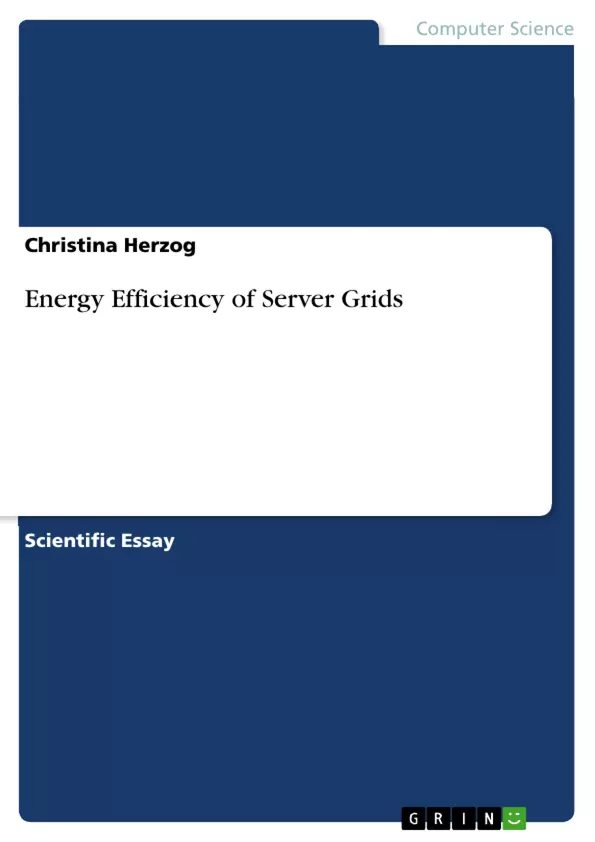According to the estimations the level of carbon emission in the sector of information and communication technologies triples by 2020 . This raised concern regarding the energy efficiency of the ICT devices and systems. Further we will discuss the guidelines and directives along which we can differentiate between technologies and their efficiency-level. These guidelines not only enable the customer of these services to attain a simple and easily manageable view on his consumption as technology user, but it also provides an evaluation system for local governmental and international regulators and projects. Then we examine the problem of energy efficiency in a specific field of the ICT, the server grids, as the demand for the services of this area is one of the fastest growing sections of the ICT sector. Than we rule out two possible ways of solving energy efficiency on the grids, and compare them. Finally in the conclusion we point out the main factors that make these solutions successful, and to which extent they match to our guidelines.
Inhaltsverzeichnis (Table of Contents)
- Introduction
- Key actions and guidelines for the ICT sector
- The challenge of the data center
- Green Strategies of Grid: SymbioticSphere and Energy-Aware Reservation Infrastructure (EARI)
- Architecture of the server grids
- Principles of behavior and the working methods
- Conclusions
Zielsetzung und Themenschwerpunkte (Objectives and Key Themes)
This text examines the growing energy consumption of information and communication technology (ICT) and its impact on the environment, particularly focusing on the energy efficiency of server grids. It aims to provide guidelines and solutions for improving energy efficiency within the ICT sector and specifically within data centers.
- Energy efficiency in the ICT sector
- The environmental impact of data centers and server grids
- Green strategies and solutions for energy-aware reservation infrastructure (EARI)
- The role of guidelines and directives in promoting energy efficiency
- The importance of standardized measurement methods for energy consumption and emissions
Zusammenfassung der Kapitel (Chapter Summaries)
- Introduction: The chapter introduces the urgent need to address the energy efficiency of ICT devices and systems, highlighting the growing concern about the environmental impact of the sector. The text discusses the rapid growth of ICT penetration and the increasing carbon footprint associated with server grids.
- Key actions and guidelines for the ICT sector: This chapter presents the SMART 2020 report's recommendations for improving energy efficiency in the ICT sector. It outlines five key actions: Standardization, Monitoring, Accountability, Rethinking, and Transmission. These actions focus on promoting transparency, data analysis, and sustainable practices throughout the ICT lifecycle.
- The challenge of the data center: This chapter focuses on the energy consumption of data centers and server farms, highlighting the significant contribution they make to the ICT sector's overall carbon footprint. The chapter emphasizes the rapid growth of data center infrastructure and the need for innovative solutions to minimize their energy consumption.
Schlüsselwörter (Keywords)
The main keywords and focus topics of this work include: energy efficiency, information and communication technologies (ICT), energy awareness, server farms, server grids, network technologies, carbon footprint, data centers, green strategies, SymbioticSphere, and Energy-Aware Reservation Infrastructure (EARI).
- Quote paper
- Christina Herzog (Author), 2010, Energy Efficiency of Server Grids, Munich, GRIN Verlag, https://www.grin.com/document/144464



